24 Moments When Classic Cartoons Accidentally Predicted The Future
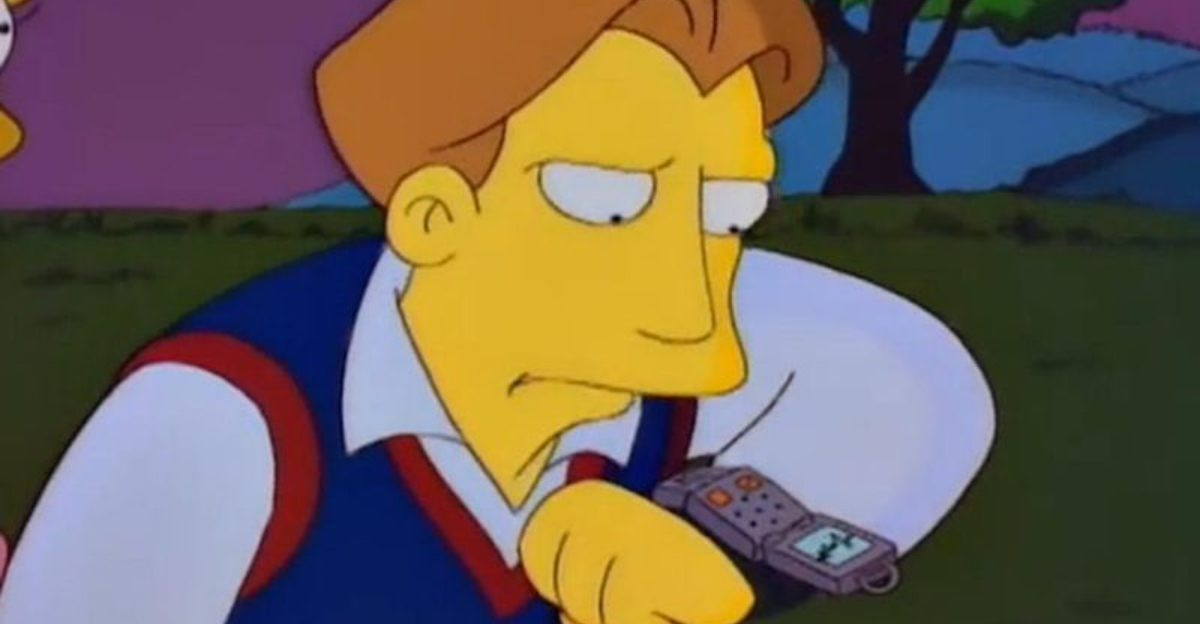
I’ve always been amazed at how the cartoons I watched as a kid somehow predicted the future with eerie accuracy.
Whether it was wild tech gadgets that seemed like pure fantasy back then—think video calls, smartwatches, or even robot helpers—or jaw-dropping world events that felt too far-fetched to ever happen, those animated shows had a knack for peeking into the future.
It’s like the writers had crystal balls instead of coffee mugs in their studios! Of course, they were just trying to entertain us with wild storylines and off-the-wall humor, never imagining their quirky creations might one day mirror reality.
But time and time again, these shows crossed the line between fiction and foresight.
So grab your nostalgia goggles and hop on the time-traveling cartoon train—let’s dive into the most mind-blowing moments when childhood animation accidentally turned into a sneak preview of the real world!
1. The Jetsons’ Video Calling Revolution
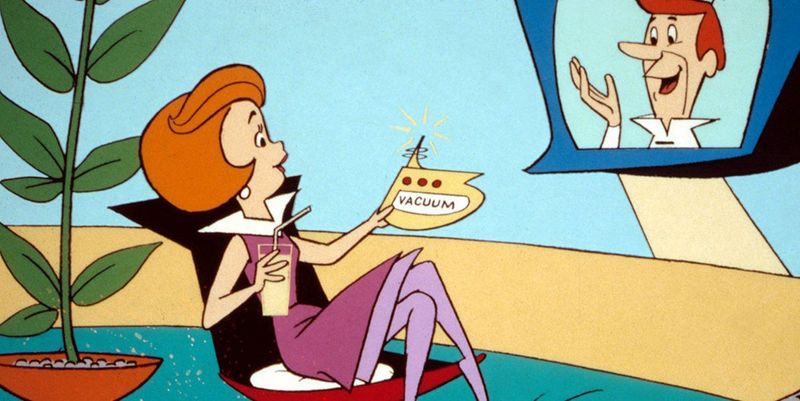
Remember those futuristic video calls in The Jetsons? As a kid, I thought those screen-to-screen conversations were pure fantasy. George Jetson would chat face-to-face with his boss Mr. Spacely through a screen, often while still in his pajamas (relatable, right?).
Fast forward to today, and I’m regularly FaceTiming my mom while hiding my own messy room from view. The show aired in 1962 when telephones were still attached to walls with cords, making this prediction particularly impressive. The Jetsons didn’t just get video calling right – they nailed the social awkwardness that sometimes comes with it!
What’s especially remarkable is how the show portrayed video calls as an everyday technology, not some rare luxury. Now with Zoom, Skype, and dozens of other platforms, we’re living in the Jetsons’ world, just without the flying cars… yet.
2. Penny’s Digital Camera in Inspector Gadget
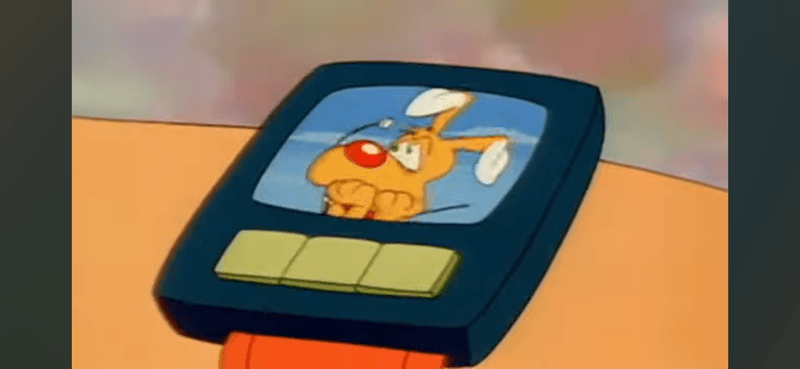
Growing up watching Inspector Gadget in the 80s, I never questioned why Penny had that amazing computerized book with a camera function. She’d snap photos of the bad guys and instantly see the results on her screen – pure cartoon magic, I thought!
Little did any of us realize that Penny was wielding what we’d eventually call a digital camera or tablet. Her high-tech book could capture images, process information, and even communicate with her watch – essentially an iPad before Apple was even thinking about tablets.
The creators accidentally predicted our digital photography revolution decades before it happened. Today, as I snap countless photos on my smartphone without a second thought, I sometimes wonder if Penny would be impressed or just say, “Told you so!” The technology we now take for granted was once so fantastical it belonged in a cartoon about a bumbling cyborg detective.
3. The Simpsons’ Smartwatch Premonition
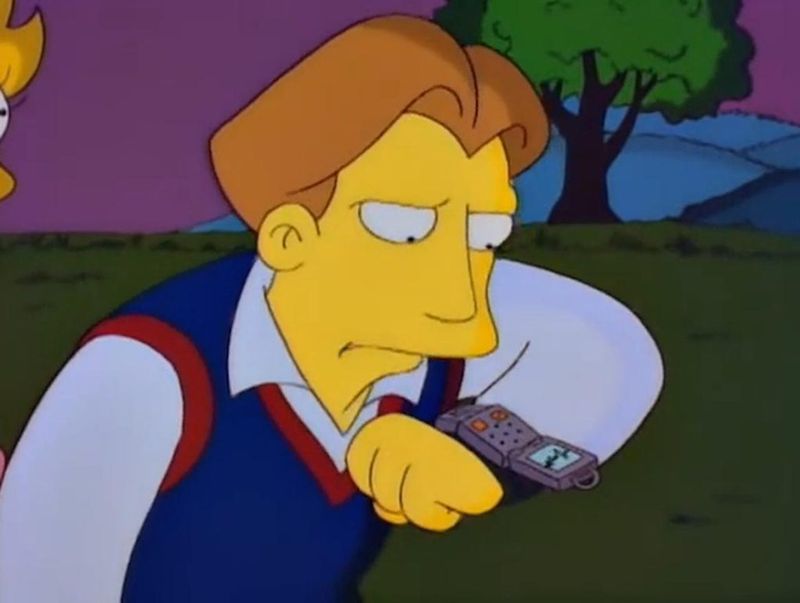
Back in 1995, The Simpsons aired an episode where characters used watches as communication devices. I laughed at the ridiculous idea of talking into my wrist like some secret agent! The episode “Lisa’s Wedding” showed a future where watch-phones were completely normal, not science fiction.
Fast-forward to today, and I’m literally answering calls on my Apple Watch while grocery shopping. The animators drew these devices as natural extensions of communication technology, predicting our smartwatch revolution with eerie accuracy.
What makes this prediction particularly impressive is how casual it was – just background technology in a future world, not even the main focus of the scene. The Simpsons didn’t just predict the technology; they predicted how integrated it would become in our daily lives. Now I’m wondering what other Simpsons background gags might become tomorrow’s headlines!
4. Disney’s Fox Acquisition Foreseen by The Simpsons
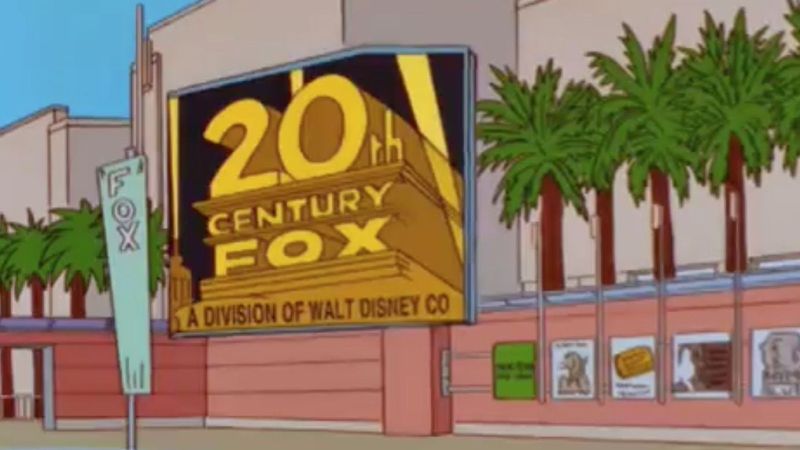
My jaw literally dropped when Disney announced they were buying 20th Century Fox in 2017. Not because of the business move itself, but because I remembered that episode of The Simpsons from 1998 showing the 20th Century Fox logo with “A Division of Walt Disney Co.” underneath it.
The writers inserted this as a throwaway joke in “When You Dish Upon a Star,” poking fun at Disney’s habit of acquiring entertainment properties. Nobody, including the writers themselves, could have seriously believed this corporate merger would actually happen 19 years later!
The coincidence is downright spooky when you consider the specificity. They didn’t just predict some vague media consolidation – they named the exact companies involved. Matt Groening must have some kind of crystal ball hidden in the animation studio! This prediction showcases how The Simpsons’ satirical jabs at corporate America sometimes hit closer to home than anyone expected.
5. Blinky the Three-Eyed Fish Predicts Environmental Concerns
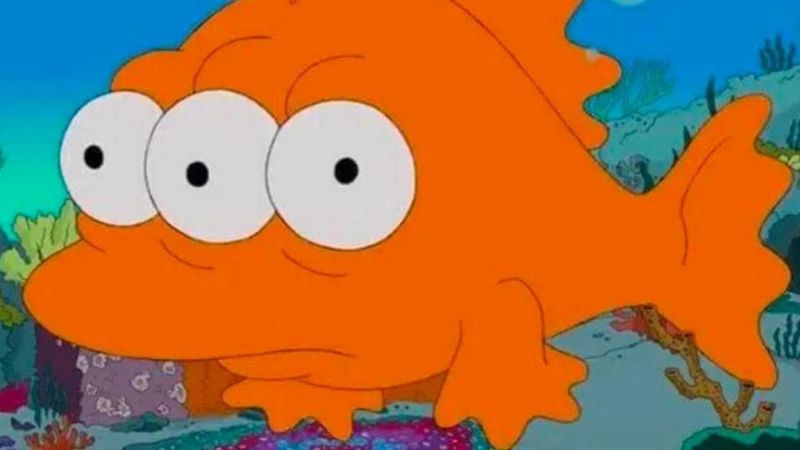
I’ll never forget the first time I saw Blinky, the three-eyed fish from The Simpsons, pulled from the river near Springfield’s nuclear power plant. As a kid, I thought it was just a gross-out joke about pollution. Mr. Burns even tried to normalize the mutation by attempting to serve Blinky for dinner!
Years later, I was reading news about actual mutated fish being discovered near nuclear facilities, and suddenly that cartoon gag didn’t seem so far-fetched. The 1990 episode “Two Cars in Every Garage and Three Eyes on Every Fish” went from silly comedy to eerily prophetic.
The Simpsons writers were highlighting environmental concerns through humor, but reality eventually caught up. In 2011, fishermen in Argentina actually caught a three-eyed wolf fish near a nuclear facility! When cartoon mutations become real-life environmental warnings, it’s both fascinating and terrifying how accurate these animated predictions can be.
6. Johnny Bravo’s Virtual Reality Gaming Experience

During a particularly memorable Johnny Bravo episode from the late 90s, our muscle-bound protagonist donned a clunky headset and gloves to play a virtual reality game. I remember laughing at how ridiculous it looked – Johnny flailing around his living room while immersed in a digital world seemed purely comedic.
Fast forward to today, and I’m literally doing the same thing with my Oculus Quest! The cartoon depicted VR gaming as an immersive experience where players physically move their bodies to interact with a virtual environment – precisely what modern VR has become.
What’s particularly impressive is how the show captured not just the technology but the social aspect too. Johnny looked absolutely ridiculous to everyone watching him play, completely unaware of how silly his movements appeared in the real world. Anyone who’s watched a friend play Beat Saber for the first time knows this cartoon prediction was spot-on in more ways than one!
7. Dexter’s Laboratory Smart Home Technology
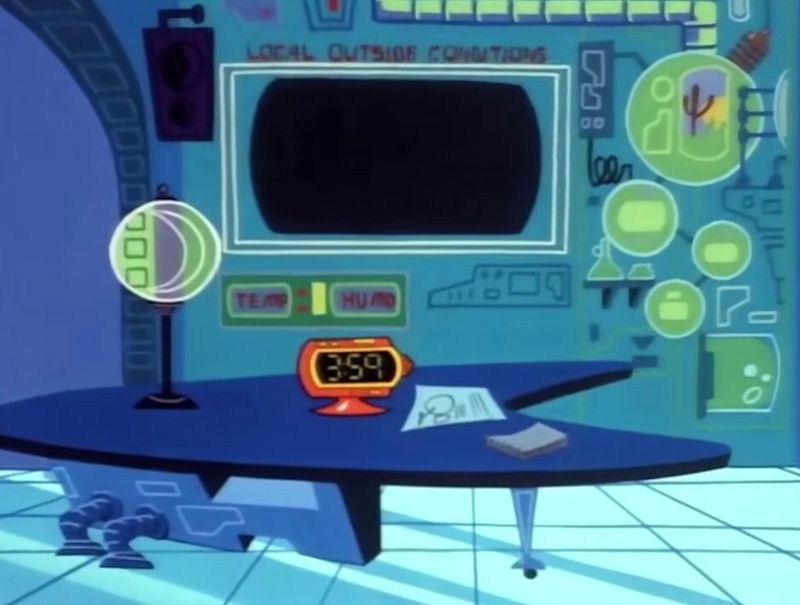
Watching Dexter’s Laboratory as a kid, I was always jealous of his voice-activated lab. “Computer, analyze this specimen!” he’d command, and his AI assistant would immediately respond. Back in the 90s, this seemed like pure science fiction – a child genius with his own artificially intelligent home system.
Today, I regularly bark orders at my Amazon Echo without a second thought. “Alexa, turn off the lights” or “Hey Google, what’s the weather?” has become so commonplace that I sometimes forget how magical this technology would have seemed to my younger self watching Dexter.
The cartoon didn’t just predict voice assistants – it showed an entire interconnected smart home system controlled by AI. Dexter could adjust temperature, security, and various devices through voice commands. While we haven’t quite reached his level of laboratory automation, our smart homes are catching up to what once seemed like an outlandish cartoon fantasy.
8. SpongeBob’s Prediction of Viral Internet Challenges
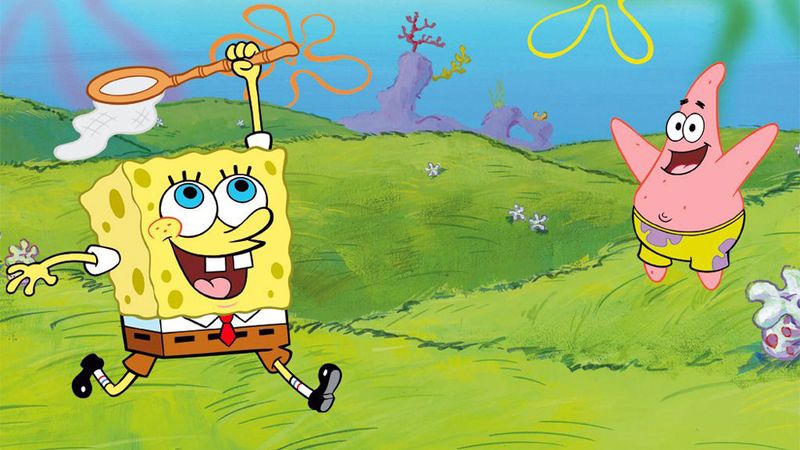
Remember the SpongeBob episode where everyone in Bikini Bottom became obsessed with jellyfishing? I recently rewatched it and realized something profound – SpongeBob predicted viral internet challenges years before they existed! The way the entire town suddenly became fixated on this one activity mirrors how TikTok trends sweep through our culture.
The episode showed characters filming themselves participating in the craze, comparing techniques, and even suffering injuries in pursuit of the perfect jellyfish catch. Sound familiar? It’s exactly how we behave with viral challenges today, from the Ice Bucket Challenge to the latest dance trend.
What makes this prediction so impressive is how it captured the psychological aspects of trend-following. Characters who initially mocked jellyfishing eventually caved to peer pressure and joined in – just like how many of us eventually try the viral trends we initially dismissed. SpongeBob wasn’t just entertaining us; it was providing a preview of our social media-driven future!
9. Teenage Mutant Ninja Turtles’ Food Delivery Prophecy
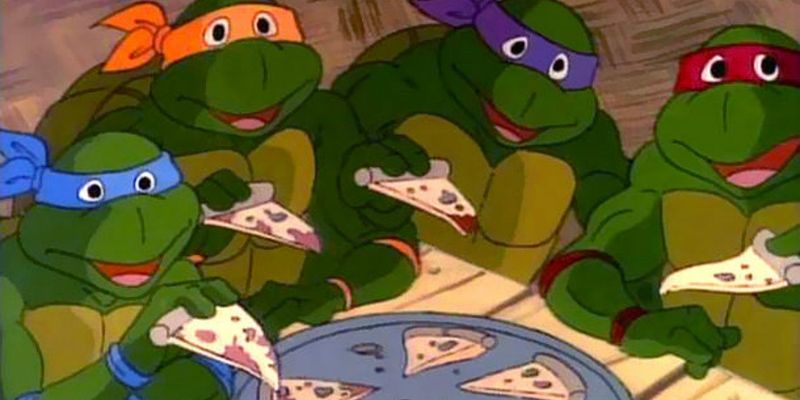
As a pizza-loving kid watching Teenage Mutant Ninja Turtles in the late 80s and early 90s, I was endlessly amused by how the turtles could get pizza delivered to random locations – even sewers! Their ability to call up and get food brought directly to them seemed like a convenient plot device rather than a realistic service.
Fast forward to today, and I’m regularly using apps to have everything from sushi to groceries delivered to my doorstep. The turtles’ constant pizza deliveries predicted our modern food delivery culture with startling accuracy.
What’s particularly prescient is how normalized the service was in the cartoon. The delivery person never questioned bringing food to strange locations, much like today’s delivery drivers who follow app instructions to bring food practically anywhere. While I haven’t tried ordering delivery to a sewer grate yet, the turtles’ convenient food acquisition system has essentially become our everyday reality!
10. Doug’s Anticipation of Social Media Oversharing
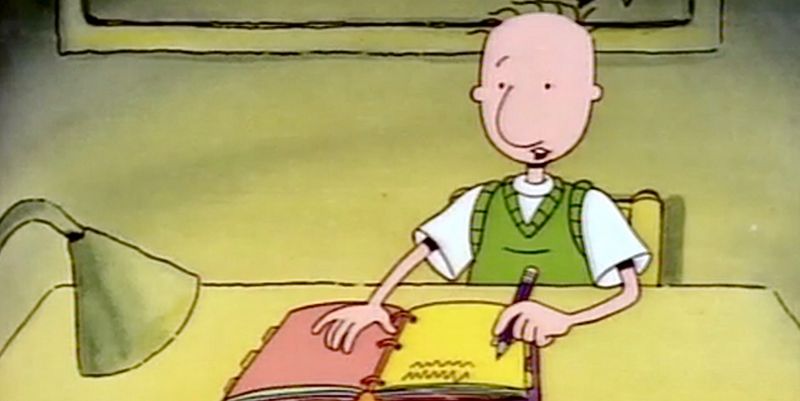
Doug Funnie’s journal obsession feels remarkably prophetic in our social media age. I used to watch him narrate his daily life, documenting every minor embarrassment and triumph in his journal, complete with daydream sequences about how things could have gone differently.
Looking back, Doug was essentially creating analog versions of Instagram stories, TikToks, and Twitter threads! His constant need to record and reflect on everyday experiences perfectly predicted our current culture of documenting and sharing our lives online.
The cartoon even captured our tendency to catastrophize minor social interactions. Remember how Doug would imagine worst-case scenarios after small awkward moments? That’s basically what happens in our minds before posting content online now! Doug’s exaggerated daydreams about Patti Mayonnaise’s reactions mirror our anxieties about how followers will respond to our posts. This seemingly innocent 90s cartoon inadvertently predicted our social media psychology decades before platforms like Facebook even existed.
11. The Flintstones’ Prehistoric Tablet Devices
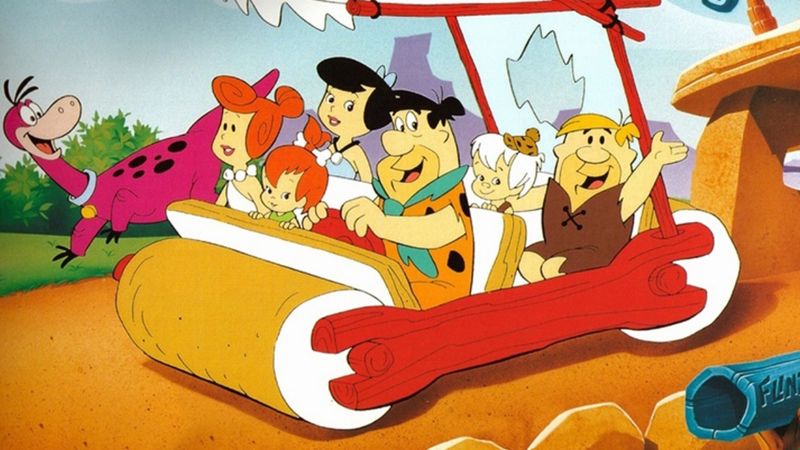
The first time I noticed Fred Flintstone using a stone tablet for writing, I never imagined I’d one day be holding something similar. The Flintstones regularly featured characters using flat, rectangular stone slabs for everything from taking notes to displaying messages – prehistoric versions of modern tablets!
What’s hilarious is that these stone tablets were often used exactly how we use iPads and other devices today. The characters would write messages, erase them, and carry them around as portable information devices.
The show even featured bird-powered cameras that would chisel instant images onto stone – essentially predicting digital photography and tablets in one prehistoric package! While The Flintstones was meant to be a stone-age parody of modern conveniences, it accidentally predicted how we would return to tablet-based technology thousands of years later. I guess technology really does come full circle – from stone tablets to paper and back to tablets again!
12. The Jetsons’ Roomba-Like Robot Maid
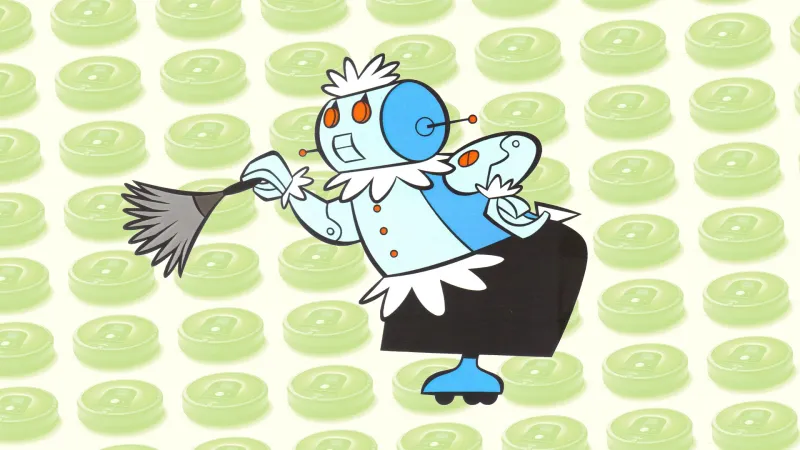
Rosie the Robot from The Jetsons was my first introduction to the concept of a household robot. As a kid, I thought having a sassy mechanical maid zooming around, cleaning up messes was pure science fiction that would never materialize in real life.
Fast forward to today, and I’m constantly tripping over my Roomba as it diligently vacuums my apartment! While our current cleaning robots aren’t quite as personable as Rosie (yet), they perform many of the same functions that once seemed like futuristic fantasy.
The Jetsons didn’t just predict robotic vacuum cleaners – they envisioned a world where automated helpers handle household chores. With smart home devices now managing everything from cleaning to security, we’re inching closer to Rosie’s comprehensive capabilities. The show’s creators somehow knew that future humans would be perfectly comfortable entrusting household tasks to robots – a prediction that seemed laughable in the 1960s but has become increasingly accurate with each new generation of domestic robots.
13. South Park’s Prophecy of Self-Driving Cars

I distinctly remember a South Park episode where the boys rode in a self-driving car with no human driver. At the time, I thought it was just another absurd South Park scenario meant for laughs – cars that drive themselves without human intervention seemed completely implausible.
Looking back at this episode now, I’m amazed at how accurately it portrayed what would become a major technological development. The cartoon didn’t just predict the existence of autonomous vehicles; it captured society’s mixture of fascination and unease with the technology.
The episode showed both the convenience and the potential dangers of self-driving technology, mirroring our current conversations about Tesla’s Autopilot and other autonomous driving systems. What’s particularly impressive is how the show predicted this technology would function in everyday scenarios rather than just as a luxury curiosity. South Park’s knack for satirizing current events somehow extended to predicting future ones, making this automotive prophecy all the more remarkable!
14. Scooby-Doo’s Drone Surveillance Foreshadowing
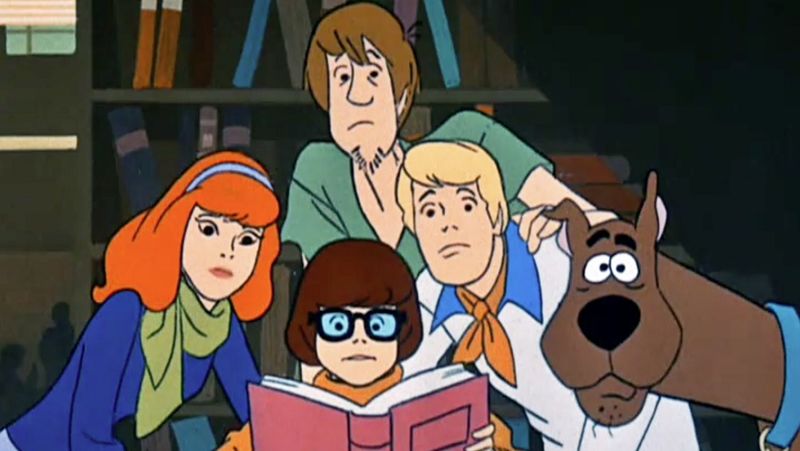
Remember those Scooby-Doo episodes where the gang would use remote-controlled helicopters with cameras to spy on suspects? As a kid, I thought those gadgets were just cool Velma and Fred inventions that could never exist in real life.
Fast forward to today, and drones with cameras are everywhere! What once seemed like an imaginative cartoon surveillance tool has become an accessible technology for everything from filmmaking to package delivery.
The show was particularly prescient about how these devices would be used. The Mystery Inc. gang primarily used their flying cameras for surveillance and gathering evidence – exactly how many drones are employed today by both civilians and authorities. While Scooby and Shaggy were busy running from monsters, the show was quietly predicting a major technological development that would transform everything from photography to warfare. Those meddling kids weren’t just solving mysteries; they were giving us a glimpse of our drone-filled future!
15. The Fairly OddParents’ Virtual Assistant Prediction
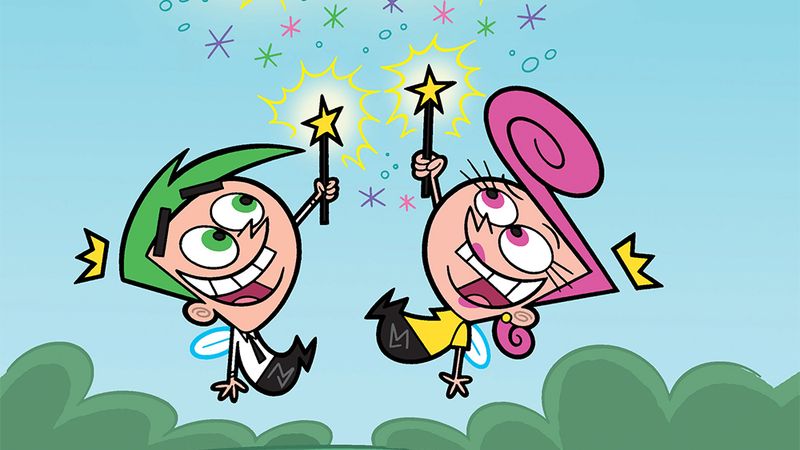
Watching The Fairly OddParents as a teenager, I never thought twice about how Timmy Turner would make wishes by simply speaking them aloud to Cosmo and Wanda. His magical fairy godparents would float nearby, always listening for his commands and ready to grant his requests with a wave of their wands.
Today, I realize this dynamic eerily resembles how we interact with Siri, Alexa, and other virtual assistants! We speak commands into the air, and our digital helpers respond by fulfilling our requests – minus the magic wands and floating crowns.
The parallel extends beyond just the command structure. Like Cosmo and Wanda, our virtual assistants have distinct personalities and occasionally misinterpret our requests with humorous results. The cartoon inadvertently predicted not just voice-activated technology but our emotional connection to these digital helpers. While our requests might be more mundane than Timmy’s magical wishes, the relationship between human and assistant is remarkably similar!
16. Futurama’s Prediction of Wearable Technology
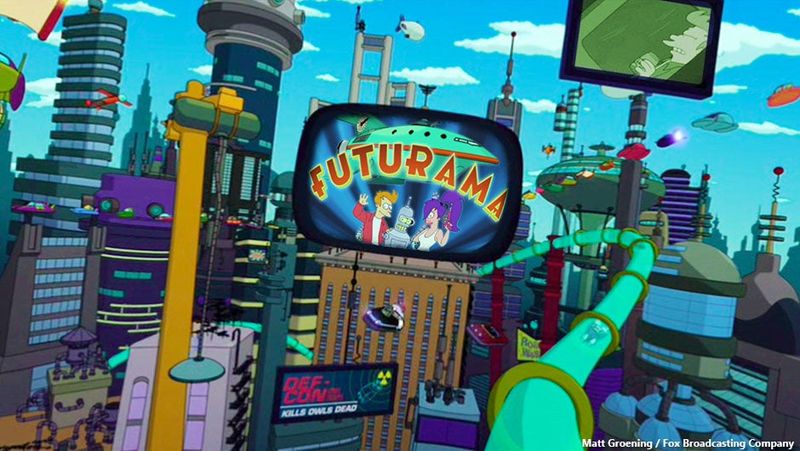
Futurama’s “eyePhone” episode had me rolling with laughter when it first aired. The ridiculous concept showed phones implanted directly into people’s eyes, taking our obsession with mobile technology to an absurd extreme. I never imagined we’d actually move toward anything remotely similar!
Yet here we are with Google Glass, Meta’s Ray-Ban smart glasses, and various AR headsets becoming increasingly mainstream. While we haven’t quite reached eye implantation level (thankfully!), the show’s core prediction about technology moving from our hands to our faces has proven remarkably accurate.
What makes this prediction particularly impressive is how it captured our cultural relationship with technology. The episode satirized our willingness to adopt increasingly invasive tech for the sake of convenience and social status – themes that dominate discussions about modern wearables. Futurama didn’t just predict a technology trend; it predicted our psychological relationship with these devices, making this cartoon prophecy particularly profound.
17. Kim Possible’s Advanced Smartwatch Communication
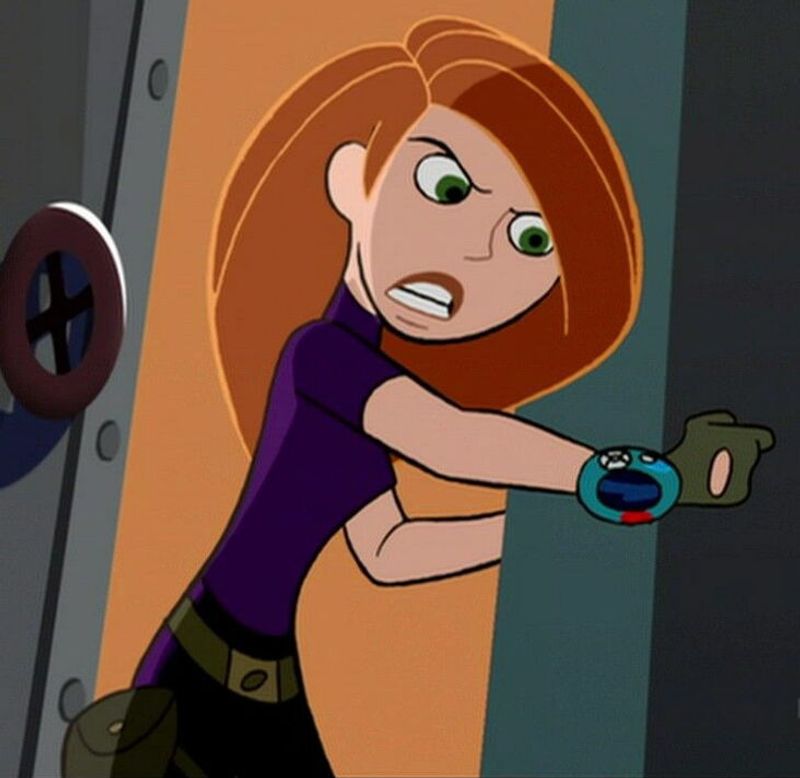
Long before I owned my first cell phone, I watched Kim Possible communicate through her high-tech wristwatch communicator. The Kimmunicator watch allowed her to video chat with Wade, access information, and even scan objects – all from her wrist!
At the time, this seemed like pure fantasy technology designed to help a teenage spy save the world. Looking at my Apple Watch today, I realize Kim was actually sporting a prototype of what would become mainstream technology years later.
What’s particularly impressive about this prediction is the accuracy of the functionality. Kim’s watch handled video calls, information retrieval, and various scanning features – all capabilities now present in modern smartwatches. The show even predicted how we’d use these devices for both practical purposes and social connection. While I’m not using my watch to foil supervillains like Dr. Drakken, the technology that once seemed reserved for cartoon spies has become an everyday accessory!
18. Rocket Power’s Prediction of Extreme Sports Popularity
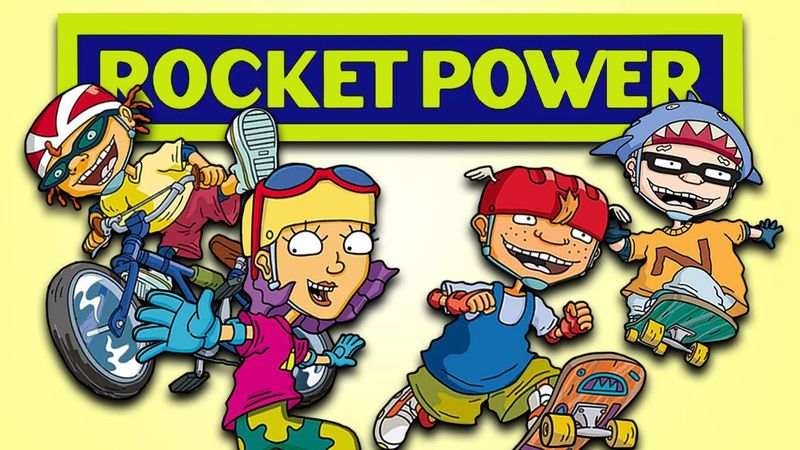
When I first watched Rocket Power in the late 90s, extreme sports like skateboarding and snowboarding were considered niche activities for rebellious kids. The show centered around Otto, Reggie, Twister, and Sam – a group of friends obsessed with these alternative sports in their California beach town.
Fast forward to today, and skateboarding, snowboarding, and surfing are Olympic sports with massive mainstream appeal! The cartoon didn’t just feature these activities; it predicted how they would evolve from counter-culture pastimes to respected athletic pursuits.
The show even anticipated how these sports would influence fashion, technology, and youth culture. Characters wore protective gear that resembles today’s safety equipment, used video to analyze and improve their techniques, and built their identities around their sports – all elements now common in extreme sports culture. Rocket Power didn’t just entertain us with radical stunts; it provided a blueprint for how alternative sports would transform into legitimate athletic disciplines embraced by mainstream culture.
19. Arthur’s Prediction of Library Digitization
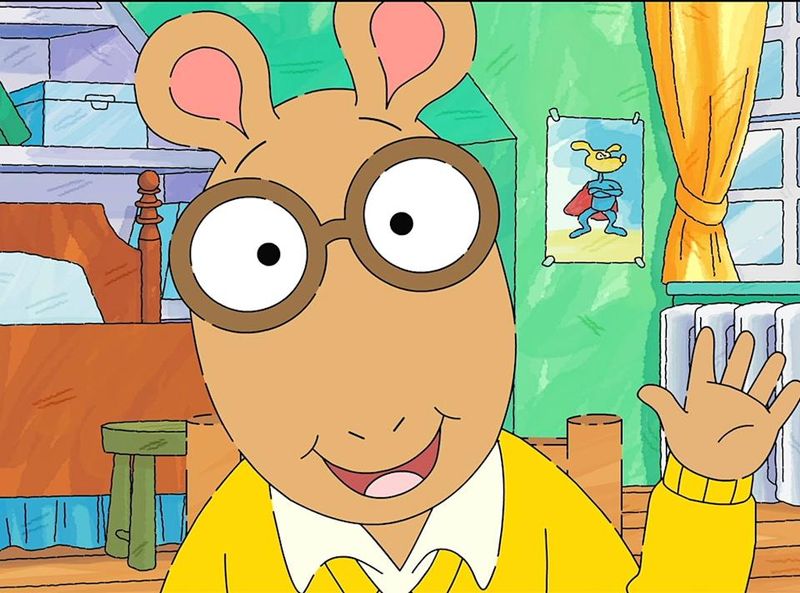
I grew up watching Arthur and his friends spend countless hours in their local library with Mrs. Turner, surrounded by physical books. In one forward-thinking episode, the show depicted the library getting computers and a digital catalog system – something that seemed like a minor modernization plot at the time.
Looking back, this episode perfectly predicted the digital transformation of libraries that would follow in the coming decades. The show captured both the excitement and resistance to this change, with some characters embracing technology while others worried about losing the traditional library experience.
What’s remarkable is how the show balanced technological progress with the enduring value of libraries as community spaces. Today’s libraries feature exactly this blend of digital resources and physical books, continuing to serve as community hubs while embracing new technologies. Arthur didn’t just predict library computers; it anticipated the evolving role of libraries in the digital age – a nuanced prediction that went beyond simply showcasing futuristic technology.
20. Batman: The Animated Series’ Surveillance State Warning
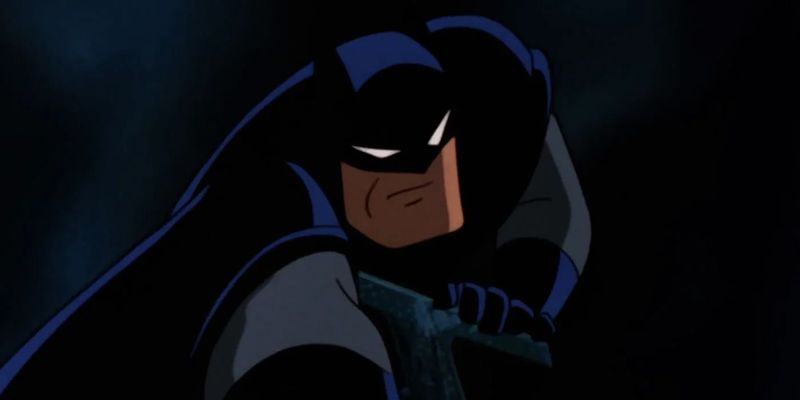
Batman: The Animated Series regularly showed the Caped Crusader using advanced surveillance technology to monitor Gotham City. As a kid, I thought his ability to access security cameras, track vehicles, and gather data on citizens was just cool crime-fighting tech that only existed in Gotham’s fictional world.
Watching these episodes now gives me chills because they essentially predicted our modern surveillance society. Batman’s monitoring systems bear a striking resemblance to the networks of cameras, facial recognition systems, and data collection methods now commonplace in cities worldwide.
What makes this prediction particularly powerful is how the show explored the ethical implications. Episodes often questioned whether Batman’s surveillance crossed privacy boundaries, even when used for good purposes – the exact debate we’re having today about government and corporate surveillance. The animated series didn’t just predict the technology; it anticipated the complex moral questions that would arise once that technology became reality.
21. Hey Arnold’s Gentrification Storyline
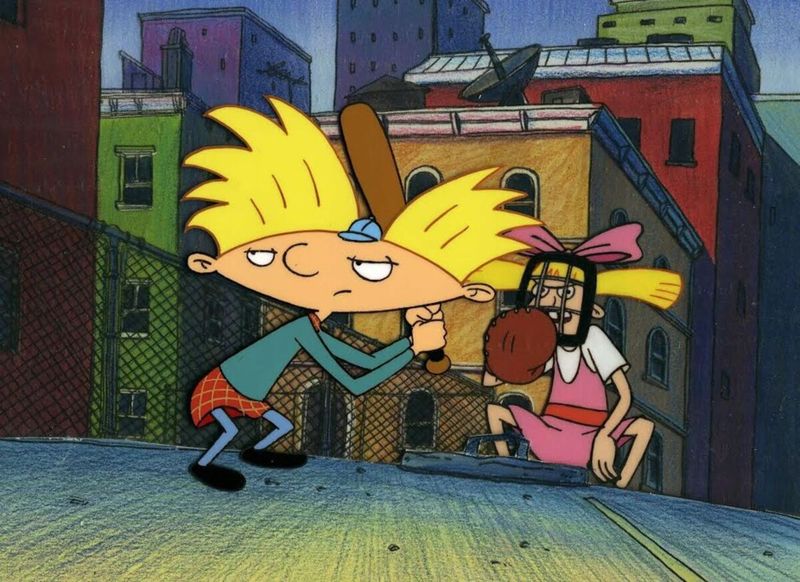
Hey Arnold! tackled urban issues with surprising depth for a kids’ show. One particular episode showed developers attempting to replace the neighborhood’s local businesses with a massive shopping mall – a storyline I enjoyed but didn’t fully appreciate as a child.
Rewatching as an adult, I realize the show was predicting gentrification trends that would transform urban neighborhoods across America in the decades to follow. The episode captured how development threatens community identity and displaces local businesses – issues that have become central to urban planning debates.
What’s especially impressive is how the show presented both sides of the issue. While clearly sympathetic to preserving neighborhood character, it acknowledged the appeal of economic development. This nuanced approach predicted the complex conversations communities would have about urban renewal, historic preservation, and economic progress. Hey Arnold! wasn’t just entertaining kids with adventures in the city; it was providing a preview of the urban development challenges that would define many American cities in the 21st century.
22. Powerpuff Girls’ Female Superhero Renaissance
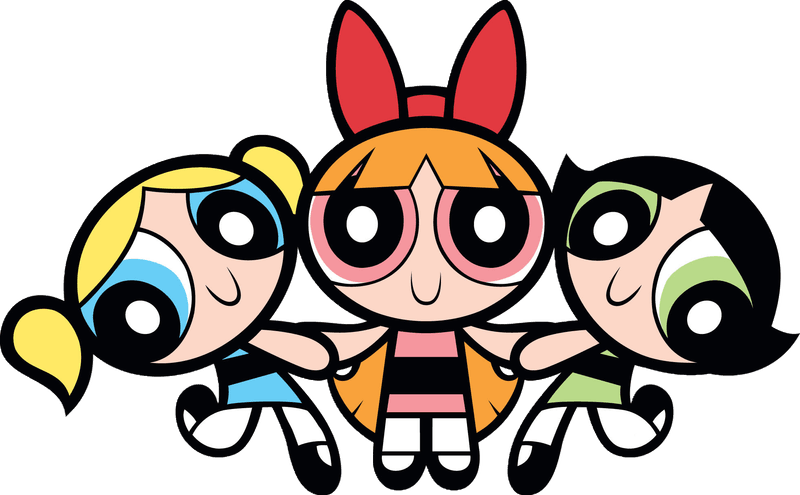
When The Powerpuff Girls debuted in the late 90s, female superheroes were still relatively rare in mainstream media. As a kid, I didn’t think twice about Blossom, Bubbles, and Buttercup being girls – they were just awesome superheroes who happened to be female.
Looking back, the show was revolutionary in normalizing female superheroes for an entire generation. It predicted the current boom in women-led superhero content that has transformed the genre, from Wonder Woman and Captain Marvel films to Ms. Marvel and She-Hulk series.
The Powerpuff Girls didn’t just feature female protagonists; it showed diverse expressions of femininity within its superhero framework. Blossom’s leadership, Bubbles’ compassion, and Buttercup’s toughness demonstrated that heroism comes in different forms – a message that has become central to modern superhero storytelling. The cartoon wasn’t just entertaining; it was laying groundwork for a significant shift in superhero media that would fully materialize decades later.
23. The Magic School Bus Predicts Virtual Reality Education
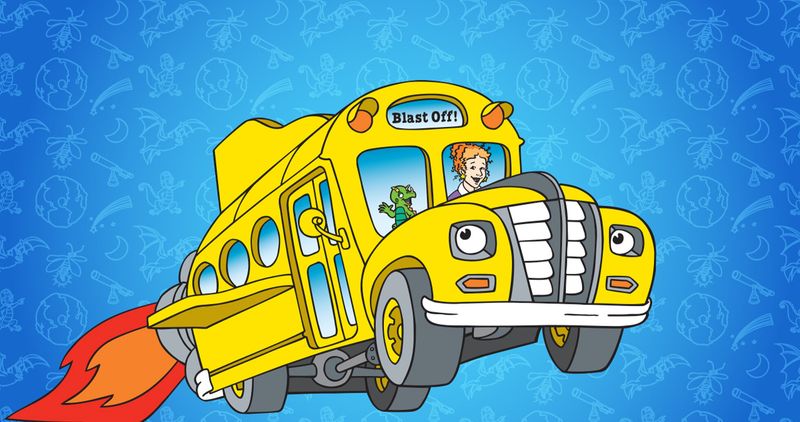
Ms. Frizzle’s famous catchphrase “Take chances, make mistakes, get messy!” took on new meaning when she shrunk the Magic School Bus and the entire class to explore inside a human body or journey through space. As a student stuck in regular field trips to museums, I was insanely jealous of these immersive educational adventures.
Today’s educational VR experiences have turned this cartoon concept into reality! Students can now virtually explore historical sites, dive into ocean ecosystems, or journey through the human circulatory system – all without leaving the classroom.
What makes this prediction particularly impressive is how the show captured the educational philosophy behind such technology. Ms. Frizzle believed in experiential learning – that students understand concepts better by engaging with them directly rather than just reading about them. This approach has become the guiding principle behind educational VR development. The Magic School Bus wasn’t just showing us a fantastical school experience; it was previewing how technology would transform education by making the impossible possible.
24. Captain Planet’s Climate Change Warnings
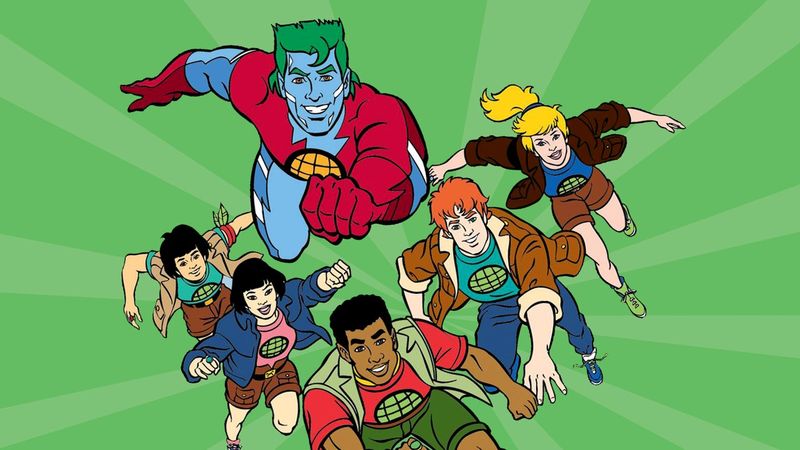
“The power is YOURS!” Captain Planet would shout after saving the day from another eco-villain. As a kid in the early 90s, I thought the show’s environmental messages were important but somewhat exaggerated for dramatic effect.
Three decades later, Captain Planet’s warnings about pollution, deforestation, and climate change seem less like cartoon scenarios and more like prophetic news headlines. The show predicted our current climate crisis with stunning accuracy, from rising sea levels to extreme weather events.
What’s particularly remarkable is how the show emphasized individual and collective responsibility for environmental protection. Captain Planet could only be summoned when the Planeteers combined their powers – a metaphor for how addressing climate change requires both personal action and global cooperation. This message has become central to modern climate activism. While we haven’t developed magic rings to summon environmental superheroes, the show’s core message about humanity’s responsibility to protect our planet has proven prescient in ways both inspiring and sobering.
